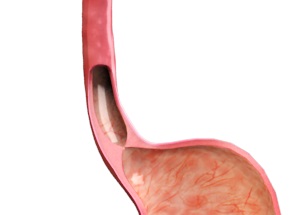
What is Oesophageal Motility?
Oesophageal motility refers to the rhythmic contraction and relaxation of the muscles in the oesophagus or food pipe to produce a wave-like motion that propels food and liquids from the mouth towards the stomach.
What is Oesophageal Motility Disorder?
Oesophageal contractions follow a regular and synchronised pattern to produce the wave-like motion which facilitates the movement of food. In some cases, these contractions become slowed, irregular or unsynchronised, which is referred to as a motility disorder. With oesophageal motility disorder, foods and liquids do not easily pass down the oesophagus causing problems with swallowing as well as other symptoms.
Causes of Oesophageal Motility Disorder
An oesophageal motility disorder may be associated with abnormalities of the oesophagus including:
- Ulcer
- Stricture
- Irritation
- Infection, inflammation
- Cancer
- Abnormal muscles or lack of muscle control and coordination such as achalasia (poor relaxation of the sphincter between the oesophagus and stomach)
Symptoms of Oesophageal Motility Disorder
Common signs and symptoms of oesophageal motility disorders include:
- Difficulty swallowing
- Heartburn
- Regurgitation
- Chest pain
- Weight loss and malnutrition
- Recurrent bouts of pneumonia
Diagnosis of Oesophageal Motility Disorder
Your doctor will review your symptoms and medical history and perform a thorough physical examination to evaluate oesophageal motility and identify other abnormalities. The following diagnostic tests may be performed for further evaluation:
- Barium swallow study: A barium swallow test is a special type of imaging test that uses barium to produce a clear outline of the upper oesophagus on X-ray images obtained while you are swallowing.
- Endoscopy: An endoscope is a thin tube with a camera that can be inserted through the mouth to look directly at the inner walls of the oesophagus.
- Endoscopic ultrasound (EUS): This is a procedure that combines endoscopy and ultrasound to produce images and provide information about the oesophagus and its surrounding tissues and organs.
- Oesophageal manometry: This procedure is used to measure oesophageal muscle function.
- pH study: This study is done to detect the abnormal reflux of acidic stomach contents into the oesophagus.
Treatment of Oesophageal Motility Disorder
Treatment for oesophageal motility disorder will depend on the type of disorder and its underlying cause. Some common treatments include:
- Medications to reduce spasms of the oesophageal muscles
- Botox injections into the area of poor motility
- Balloon dilation that involves dilating an area of stricture in the oesophagus. It can be used to disrupt dysmotility in the lower oesophagus due to achalasia.
- Heller myotomy, a procedure in which the muscles of the lower oesophageal sphincter are cut to allow food and liquids to pass to the stomach.
Related Topics
- Gastroesophageal Reflux Disease (GERD)
- Irritable Bowel Syndrome
- Inflammatory Bowel Disease
- Crohn's Disease
- Indigestion
- Diarrhoea
- Bowel Incontinence
- Unintentional Weight Loss
- Constipation
- Upper Gastrointestinal Disease
- Swallowing Disorders
- Oesophageal Motility Disorder
- Achalasia
- Gastric Disease
- Gastritis
- Gastric Ulcers
- Peptic Ulcer
- Gastroparesis
- Gallbladder Disease
- Gallstones
- Liver Disease
- Fatty Liver Disease
- Hepatitis
- Hepatitis A
- Hepatitis B
- Hepatitis C
- Liver Masses
- Hepatobiliary Disease
- Pancreatobiliary Diseases
- Evaluation of Gastrointestinal Malignancy or Pre-Malignant Conditions
- Liver Cancer
- Pancreatic Cancer
- Biliary Tract Cancer
- Polyp to Colon Cancer Progression
- Small Intestinal Bacterial Overgrowth (SIBO)
- Eosinophilia and Eosinophil-Associated Gastrointestinal Disorders (EGIDs)
- Inflamed or Irritable Bowel
- Coeliac Disease
- Diverticular Disease
- Diverticulosis
- Diverticulitis
- Upper Gastrointestinal Bleeding
- Lower Gastrointestinal Bleeding
- Rectal Bleeding
- Prevention of Gastrointestinal Diseases
